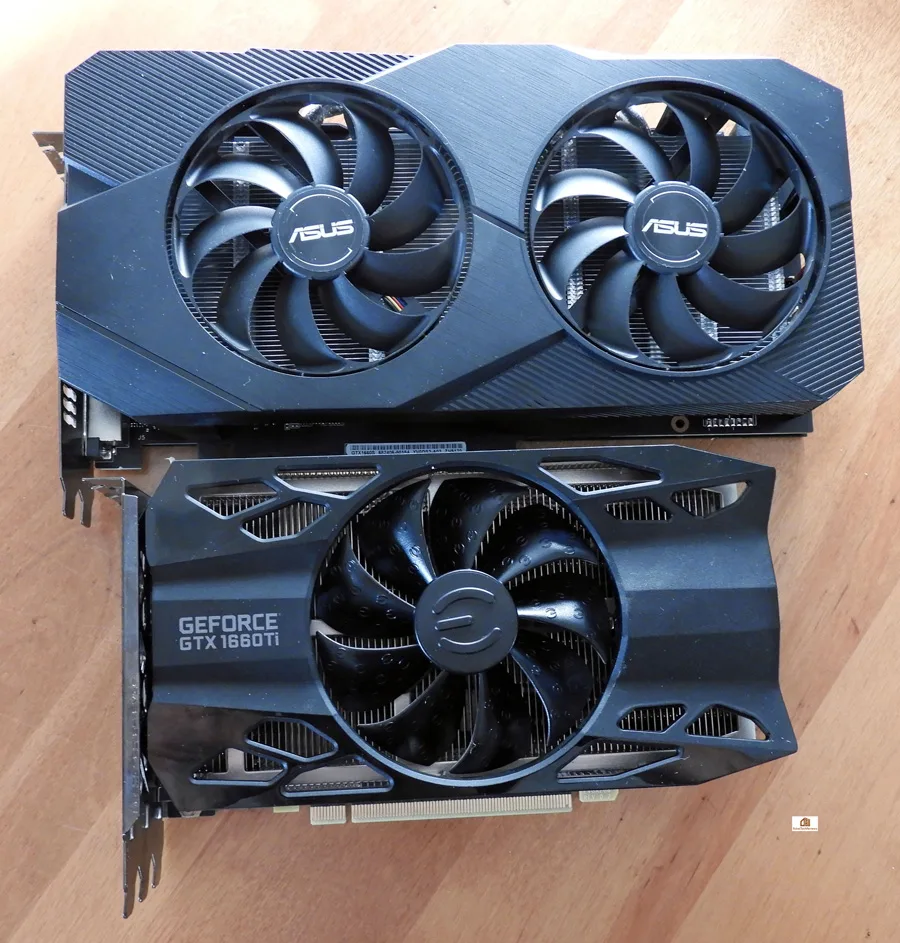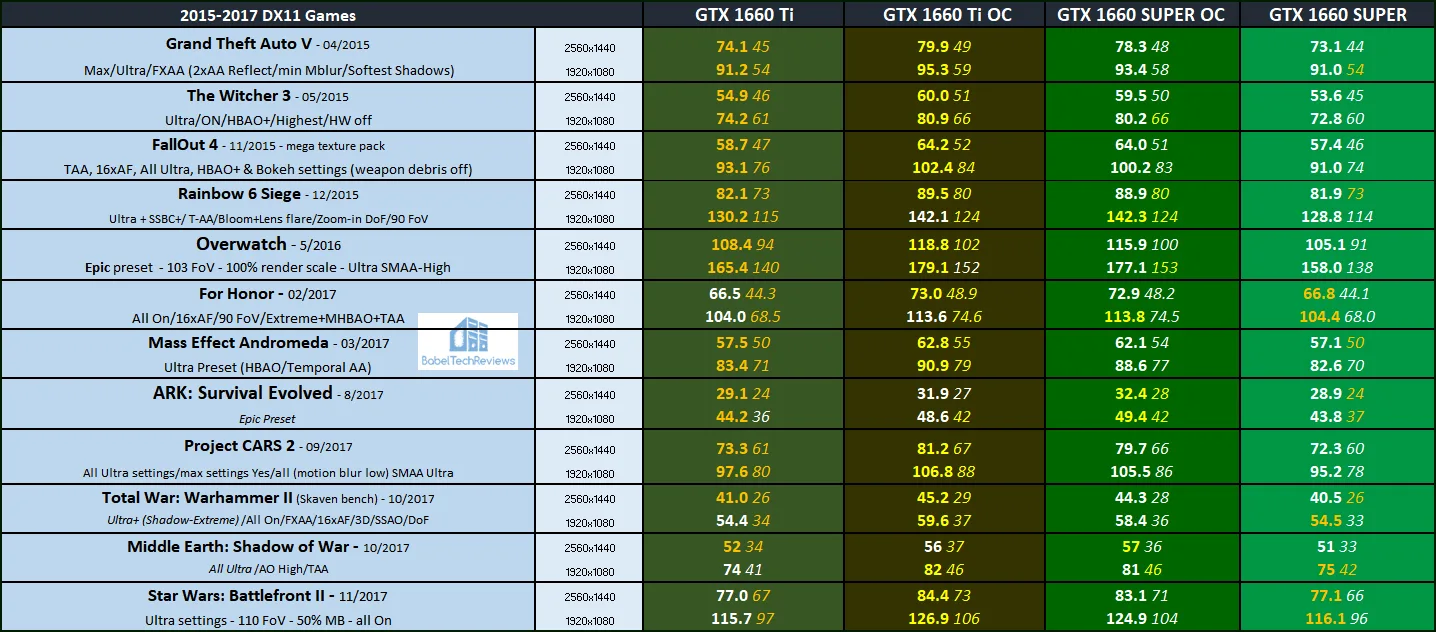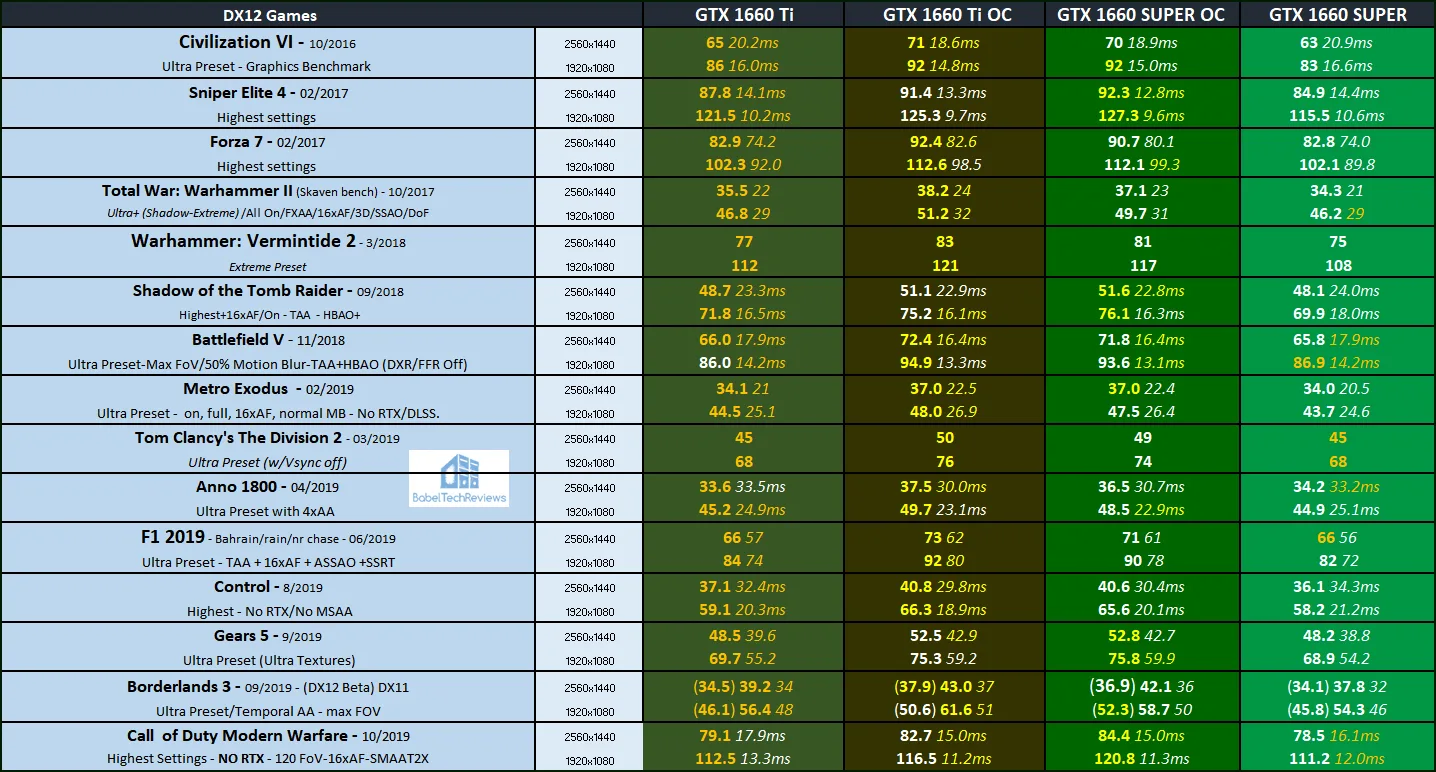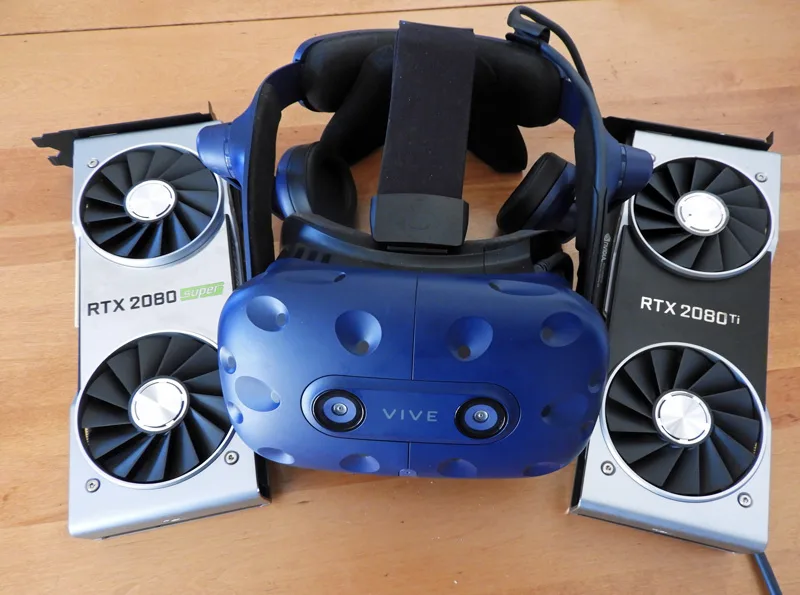Overclocking Showdown with 46 Games – The GTX 1660 SUPER vs. the GTX 1660 Ti – is the Ti worth its price premium?
This overclocking showdown is the follow-up to the ASUS Dual GTX 1660 SUPER EVO review where we are now focusing on its maximum overclocked performance versus the maximum overclocked EVGA GTX 1660 Ti XC. The GTX 1660 SUPER was recently released at the same $229 with significantly more performance than the original vanilla GTX 1660. We found the new GTX 1660 SUPER performs within about 3% of the nearly fifty dollars more expensive Ti but we want to see if manually overclocking each card changes anything.
The ASUS Dual GTX 1660 SUPER EVO Overclocking
We reached a final stable overclock close to 2100MHz by adding +165MHz to the ASUS DUAL GTX 1660 SUPER EVO OC core’s offset. The GDDR6 is also highly overclockable as we were able to add +850MHz. Full overclocking details are here.
The EVGA GTX 1660 Ti XC Overclocking
We added 175MHz to the core to boost the EVGA GTX 1660 Ti XC’s clocks above 2050MHz. We also added 800MHz to the GDDR6 memory overclock and the full details of our overclocking experience is here.
Let’s check the performance results of 46 games with our games at factory-clocked and overclocked speeds using the EVGA GTX 1660 SUPER DUAL EVO OC and the ASUS GTX 1660 TI XC.
Testing Platform
We test 46 games and 3 synthetic benchmarks at 2560×1440 and at 1920×1080. Our testing platform is a recent install of Windows 10 64-bit Home Edition v1903, and we are using an i7-8700K which turbos all 6 cores to 4.8GHz, an EVGA Z370 FTW motherboard, and 16GB of XTREEM DDR4 at 3866MHz. The games, settings, and hardware are identical except for the cards being compared.
Before we run our benchmarks, let’s check out the full test configuration.
Test Configuration – Hardware
- Intel Core i7-8700K (HyperThreading and Turbo boost is on to 4.8GHz for all cores; Coffee Lake DX11 CPU graphics).
- EVGA Z370 FTW motherboard (Intel Z370 chipset, latest BIOS, PCIe 3.0/3.1 specification, CrossFire/SLI 8x+8x), supplied by EVGA
- T-FORCE 16GB DDR4 (2x8GB, dual channel at 3866 MHz), supplied by Team Group
- ASUS DUAL GTX 1660 SUPER EVO OC, on loan from ASUS
- EVGA GTX 1660 Ti XC Gaming 6GB, stock GTX 1660 Ti clocks, on loan from EVGA
- 2 x 480GB Team Group SSDs – one for AMD, and one for NVIDIA
- 1.92TB San Disk enterprise class SSD
- 2TB Micron 1100 enterprise class SSD
- 500GB Vulkan SSD, supplied by Team Group
- Seasonic 850W Gold Focus power supply unit
- EVGA CLC 280mm CPU water cooler, supplied by EVGA
- EVGA Nu Audio PCIe soundcard, supplied by EVGA
- Edifier R1320T Active speakers
- EVGA DG-77, mid-tower case supplied by EVGA
- LG 43″ HDR 4K TV
- Monoprice Crystal Pro 4K
Test Configuration – Software
- GeForce 440.77 drivers used for the EVGA GTX 1660 Ti XC. . Press launch drivers 441.77 are used for the ASUS DUAL GTX 1660 SUPER EVO OC. See NVIDIA Control Panel image below.
- AA enabled as noted in games; all in-game settings are specified with 16xAF always applied
- Gaming results show average frame rates in bold including minimum frame rates shown on the chart next to the averages in a smaller italics font where higher is better. Games benched with OCAT show average framerates but the minimums are expressed by the 99th percentile frametime in ms where lower numbers are better.
- Highest quality sound (stereo) used in all games.
- Windows 10 64-bit Home edition. DX11 titles are run under DX11 render paths. DX12 titles are generally run under the DX12 render path unless performance is lower than with DX11, and Borderlands 3, Total War Warhammer II and Hitman 2 are tested on DX11 and on DX12. Four games use the Vulkan API.
- Latest DirectX
- All 46 games are patched to their latest versions at time of posting.
- WattMan used to set Radeon cooling and power options.
- Afterburner used for GeForce settings and primarily for overclocking
- ASUS GPU Tweak II
- OCAT, latest version
- Fraps, latest version
- FrameView, latest beta
- Unigine Heaven 4.0 benchmark
46 PC Game benchmark suite & 3 synthetic tests
Synthetic
- Firestrike – Basic & Extreme
- Time Spy DX12
- Superposition
DX11 Games
- Grand Theft Auto V
- The Witcher 3
- Fallout 4
- Rainbow Six Siege
- Overwatch
- For Honor
- Mass Effect: Andromeda
- ARK: Survival Evolved
- Project CARS 2
- Total Wars: Warhammer II
- Middle Earth: Shadow of War
- Star Wars: Battlefront II
- Monster Hunter: World
- Kingdom Come: Deliverance
- Final Fantasy XV
- Far Cry 5
- Conan Exiles
- Assassin’s Creed: Odyssey
- Call of Duty: Black Ops 4
- Hitman 2
- Just Cause 4
- Resident Evil 2
- Anthem
- FarCry New Dawn
- Devil May Cry 5
- Borderlands 3
- Destiny 2 Shadowkeep
- Ghost Recon Breakpoint
- The Outer Worlds
DX12 Games
- Civilization VI
- Sniper Elite 4
- Forza 7
- Total War: Warhammer II
- Total War: Vermintide 2
- Shadow of the Tomb Raider
- Hitman 2
- Battlefield V
- Metro Exodus
- Tom Clancy’s The Division 2
- Anno 1800
- F1 2019
- Control
- Gears 5
- Borderlands 3
- Call of Duty Modern Warfare
Vulkan Games
- DOOM
- Strange Brigade
- World War Z
- Wolfenstein: Youngblood
NVIDIA Control Panel settings
Here are the NVIDIA Control Panel settings that match AMD’s settings.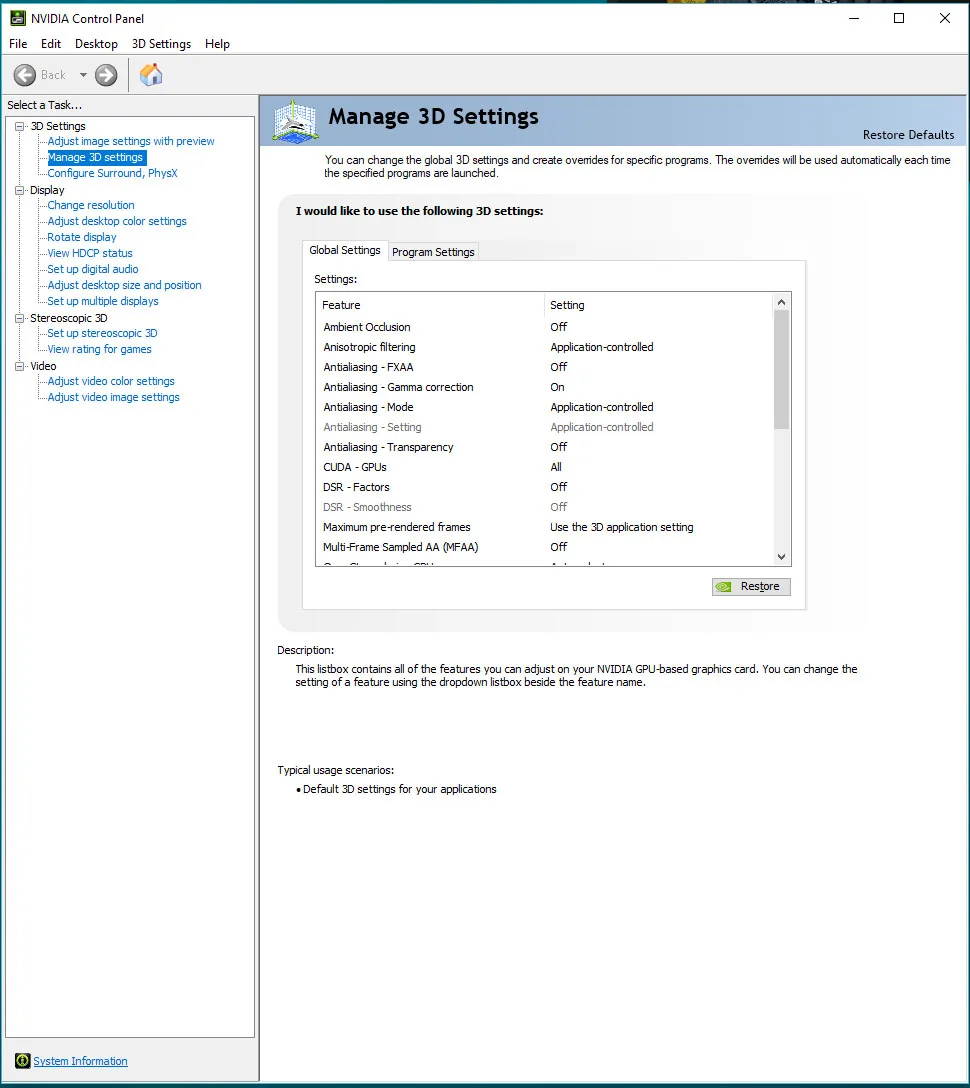
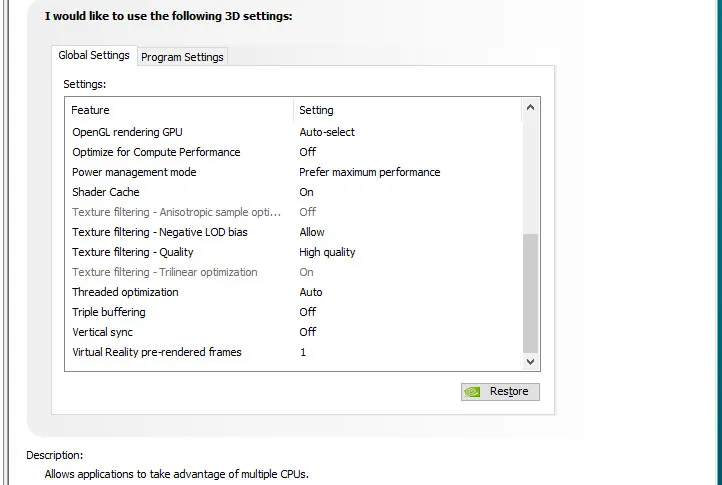 We used the latest beta of Afterburner to set both GeForce’s highest Power and Temperature targets. By setting the Power Limits and Temperature limits to maximum, they do not throttle, but they can reach and maintain their individual maximum clocks.
We used the latest beta of Afterburner to set both GeForce’s highest Power and Temperature targets. By setting the Power Limits and Temperature limits to maximum, they do not throttle, but they can reach and maintain their individual maximum clocks.
Let’s head to the performance results of our overclocking showdown.
Performance summary charts
Here are the performance results of 46 games and 3 synthetic tests comparing the factory clocked EVGA and overclocked GTX 1660 Ti versus the ASUS stock and overclocked RTX 16600 SUPER. The highest settings are always chosen and the settings are listed on the charts. The benches were run at 1920×1080 and at 2560×1440.
Gaming results show average framerates in bold text, and higher is better. Minimum framerates are next to the averages in italics and in a slightly smaller font. Games benched with OCAT results are given as frametimes in ms where lower numbers are better.
The EVGA factory-clocked GTX 1660 Ti XC is in the first column and its overclocked results are in the second column compared with the overclocked ASUS GTX 1660 SUPER Dual EVO OC in the third column, followed by the SUPER’s factory-clocked results in the fourth column. Performance “wins” between the overclocked cards are given in yellow text and in gold text for the factory clocked results. Ties are expressed by having both sets of results given in colored text.
We see that both cards each gain performance from overclocking and at first glance the GTX 1660 Ti wins most of them. However, looking more closely, most of the results are usually up to a couple of percentage points apart and there is almost no noticeable practical performance difference between the cards playing most games.
Let’s check out our conclusion.
Conclusion
This has been quite an interesting exploration for us in evaluating the factory and manually overclocked ASUS GTX 1660 SUPER versus the factory-clocked and manually overclocked EVGA GTX 1660 Ti XC. The GTX 1660 SUPER overall is very slightly slower than the GTX 1660 Ti at factory settings, and it even manages to close the performance gap a little bit when each card is overclocked manually to its limits.
A gamer looking for the best value in the $230-$280 range should probably pick a GTX 1660 SUPER over a Ti. Both cards overclock equally well on their cores and memory from our samples as they remain in an almost identical performance class. NVIDIA has almost made the GTX 1660 Ti redundant by releasing the less expensive GTX 1660 SUPER. It’s very good news for gamers but a bit confusing without doing some research. To answer our original question regarding value between the two cards, the GTX 1660 Ti is generally not worth its current price premium over the GTX 1660 SUPER.
We are going to next look at these same two cards by measuring their VR performance using a Vive Pro with FCAT-VR early next week. After that, we will explore VR performance headroom using a RTX 2080 Super and a RTX 2080 Ti.
Stay tuned. In the meantime, if you have any comments or questions, feel free to post them in the comments section below.
Happy Gaming!
